Related Research Articles

Nadine Gordimer was a South African writer and political activist. She received the Nobel Prize in Literature in 1991, recognized as a writer "who through her magnificent epic writing has ... been of very great benefit to humanity".

Harriet Jacobs was an African-American writer whose autobiography, Incidents in the Life of a Slave Girl, published in 1861 under the pseudonym Linda Brent, is now considered an "American classic". Born into slavery in Edenton, North Carolina, she was sexually harassed by her enslaver. When he threatened to sell her children if she did not submit to his desire, she hid in a tiny crawl space under the roof of her grandmother's house, so low she could not stand up in it. After staying there for seven years, she finally managed to escape to the free North, where she was reunited with her children Joseph and Louisa Matilda and her brother John S. Jacobs. She found work as a nanny and got into contact with abolitionist and feminist reformers. Even in New York, her freedom was in danger until her employer was able to pay off her legal owner.

Zenzile Miriam Makeba, nicknamed Mama Africa, was a South African singer, songwriter, actress, and civil rights activist. Associated with musical genres including Afropop, jazz, and world music, she was an advocate against apartheid and white-minority government in South Africa.
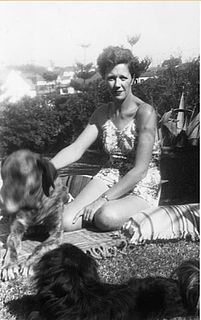
Helen Beatrice Joseph was a South African anti-apartheid activist. Born in Sussex, England, Helen graduated with a degree in English from the University of London in 1927 and then departed for India, where she taught for three years at Mahbubia School for girls in Hyderabad. In about 1930 she left India for England via South Africa. However, she settled in Durban, where she met and married a dentist, Billie Joseph, whom she later divorced.
Farida Karodia is a South African novelist and short-story writer.
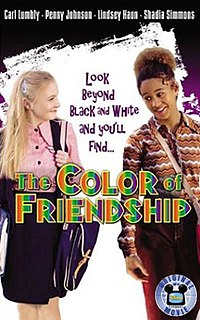
The Color of Friendship is a 2000 television film based on actual events about the friendship between two girls; Mahree & Piper, one from the United States and the other from apartheid South Africa, who learn about tolerance and friendship. The film was directed by Kevin Hooks, based on a script by Paris Qualles, and stars Lindsey Haun and Shadia Simmons.
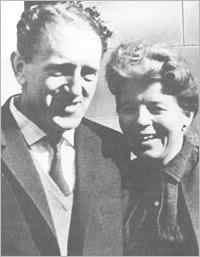
Hilda Bernstein was a British-born author, artist, and an activist against apartheid and for women's rights.
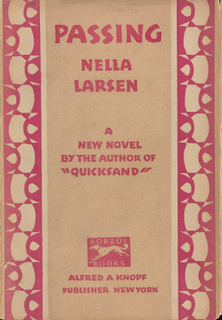
Passing is a novel by American author Nella Larsen, first published in 1929. Set primarily in the Harlem neighborhood of New York City in the 1920s, the story centers on the reunion of two childhood friends—Clare Kendry and Irene Redfield—and their increasing fascination with each other's lives. The title refers to the practice of "racial passing", and is a key element of the novel. Clare Kendry's attempt to pass as white for her husband, John (Jack) Bellew, is a significant depiction in the novel and a catalyst for the tragic events.

Burger's Daughter is a political and historical novel by the South African Nobel Prize in Literature-winner Nadine Gordimer, first published in the United Kingdom in June 1979 by Jonathan Cape. The book was expected to be banned in South Africa, and a month after publication in London the import and sale of the book in South Africa was prohibited by the Publications Control Board. Three months later, the Publications Appeal Board overturned the banning and the restrictions were lifted.

Come Back, Africa is a 1959 film, the second feature-length film written, produced, and directed by American independent filmmaker Lionel Rogosin. The film had a profound effect on African cinema, and remains of great historical and cultural importance as a document preserving the heritage of the townships in South Africa in the 1950s. It may be classified as reportage, documentary, historical movie or political cinema, since it portrays real events and people. On the other hand, it reveals an interpretation of meaningful social facts and a strong ethical assumption towards human behaviours like racism.

Cry, the Beloved Country is a 1951 British drama film directed by Zoltán Korda. Based on the novel of the same name by Alan Paton, it stars Canada Lee, Sidney Poitier, and Charles Carson. This film was Canada Lee's last film.
Beverley Naidoo is a South African author of children's books who lives in the UK. Her first three novels featured life in South Africa where she lived until her twenties. She has also written a biography of the trade unionist Neil Aggett.
Celia-Sandra Botha is a South African politician, who served as South Africa's Ambassador to the Czech Republic. She is the former Leader of the Opposition in the National Assembly, on behalf of the Democratic Alliance and its leader, Helen Zille.
Sandra Laing is a South African woman who was classified as Coloured by authorities during the apartheid era, due to her skin colour and hair texture, although she was the child of at least three generations of ancestors who had been regarded as white. At the age of 10, she was expelled from her all-white school, and the authorities' decisions based on her appearance disrupted her family and adult life.
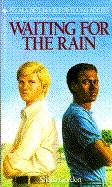
Waiting for the Rain is a young adult novel by South African-born American writer Sheila Gordon, first published in 1987. It tells the story of two boys, one black and one white, growing up on a farm in South Africa during apartheid. As the boys mature, their friendship dissipates because the black boy seeks political equality while the white boy wants everything to stay the same.

Skin is a British-South African 2008 biographical film about Sandra Laing, a South African woman born to white parents, who was classified as "Coloured" during the apartheid era, presumably due to a genetic case of atavism. Directed by Anthony Fabian and Based on the book When She Was White: The True Story of a Family Divided by Race by Judith Stone, Skin premiered at the Toronto International Film Festival on 7 September 2009.

Black Girl is an American family drama film directed by Ossie Davis based on a 1969 play written by J.E. Franklin. The film explores issues and experiences of black womanhood in the 1970s, including how black women were depicted and common stereotypes of the period. According to Melvin Donalson in Black Directors in Hollywood, "Black Girl is a film that explores the intricate and sometimes painful connections between mothers and daughters."

Imaginings of Sand is a South African novel by André Brink, published in 1996. The author wrote the book in Afrikaans and in English. It is set in South Africa at the time of the first democratic elections.
Daphne Ruth "Billie" Tapscott was a South African female tennis player. She was born in Kimberley, South Africa. In 1930 she married South African tennis player Collin John James Robbins.
Rayda Jacobs is a South African writer and film-maker.
References
- ↑ Annual Review of Islam in South Africa, Issues 3-8. Centre for Contemporary Islam, University of Cape Town. 2000. pp. 68, 71.
- 1 2 3 4 5 6 7 8 9 Jacobs, Rayda (1994). The Middle Children . Toronto, Ontario: Second Story Press. ISBN 0-929005-59-7.
- 1 2 Lehman, Daniel (November 1, 2010). ""Born From Restlessness": A Conversation With Rayda Jacobs". World Literature Today. 84 (6): 13–16. Retrieved September 28, 2017.
- ↑ PAULSE, MlCHELE (1995). Fireweed, Issues 47-50. Fireweed Incorporated. p. 74.
- ↑ Malepe, Lesego (January 1995). "Damage Control". The Women's Review of Books. 12 (4): 18–19. doi:10.2307/4022045. JSTOR 4022045.